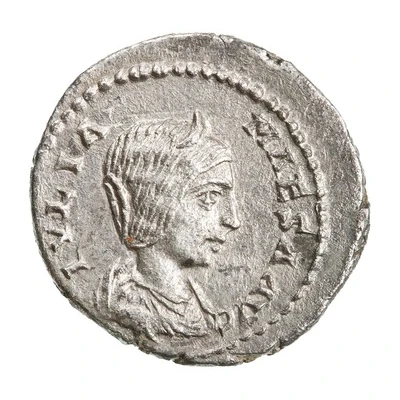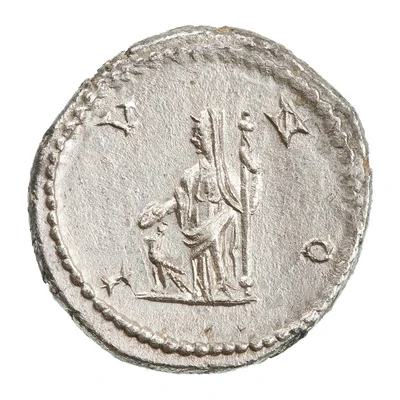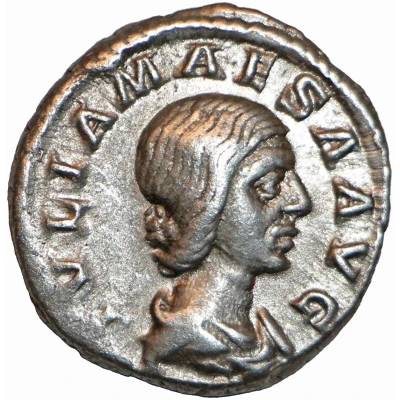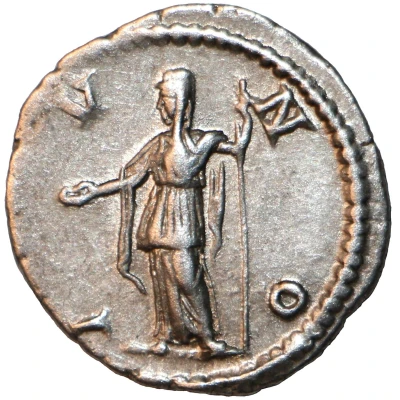


© American Numismatic Society (ANS)
Denarius - Julia Maesa IVNO; Juno
| Silver | 3.3 g | 18.5 mm |
| Issuer | Rome › Roman Empire (27 BC - 395 AD) |
|---|---|
| Emperor | Elagabalus (Sextus Varius Avitus Basianus) (218-222) |
| Type | Standard circulation coin |
| Years | 218-222 |
| Value | Denarius (½) |
| Currency | Antoninianus, Reform of Caracalla (AD 215 – 301) |
| Composition | Silver |
| Weight | 3.3 g |
| Diameter | 18.5 mm |
| Shape | Round (irregular) |
| Technique | Hammered |
| Orientation | Variable alignment ↺ |
| Demonetized | Yes |
| Updated | 2024-10-05 |
| Numista | N#276924 |
|---|---|
| Rarity index | 100% |
Reverse
Juno, veiled, draped, standing left, holding patera in extended right hand and sceptre in left hand; to left, peacock.
Script: Latin
Lettering: IVNO
Translation:
Iuno.
Juno.
Comment
Mass varies: 2.4–4.13 g;Diameter varies: 18–19.55 mm;
Example of this type:
American Numismatic Society (ANS)
Source:
Online Coins of the Roman Empire (OCRE)
Interesting fact
The Denarius - Julia Maesa (IVNO; Juno) coin was issued during the reign of Emperor Elagabalus, who was known for his controversial and unconventional reign. Elagabalus was a member of the Severan dynasty and was known for his extreme religious views and his efforts to introduce Eastern religious practices to Rome. The coin's design, which features a portrait of Julia Maesa, the emperor's grandmother, and the goddess Juno, reflects the emperor's religious beliefs and his efforts to promote the cult of the Roman goddess Juno.

